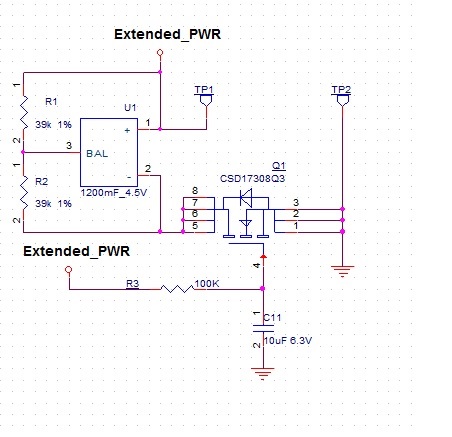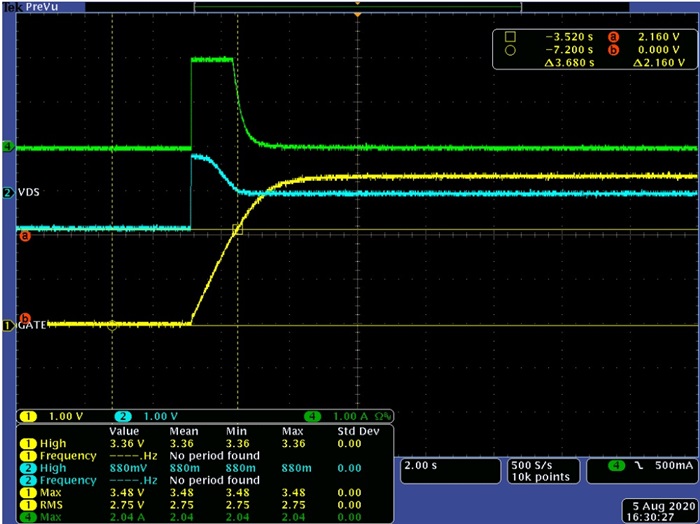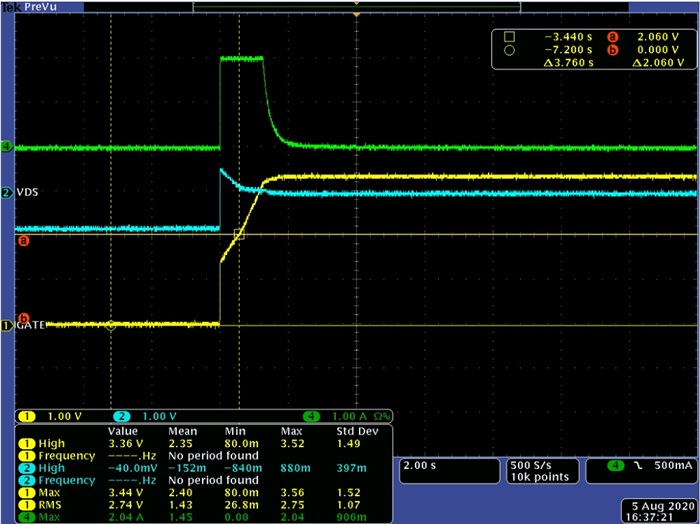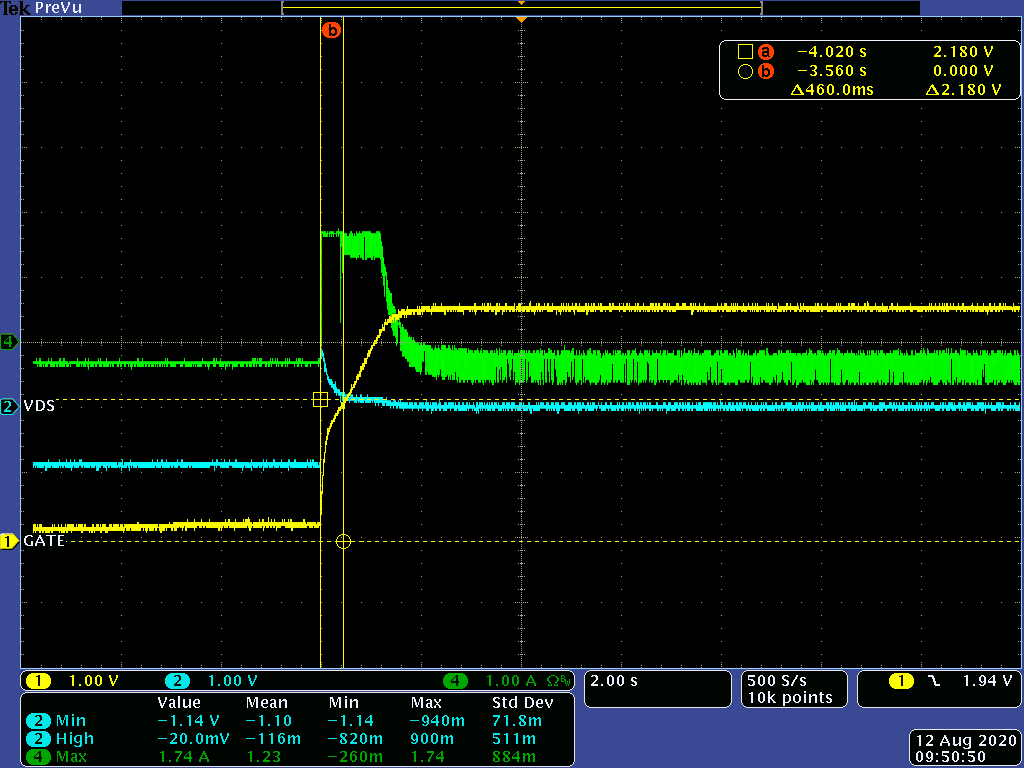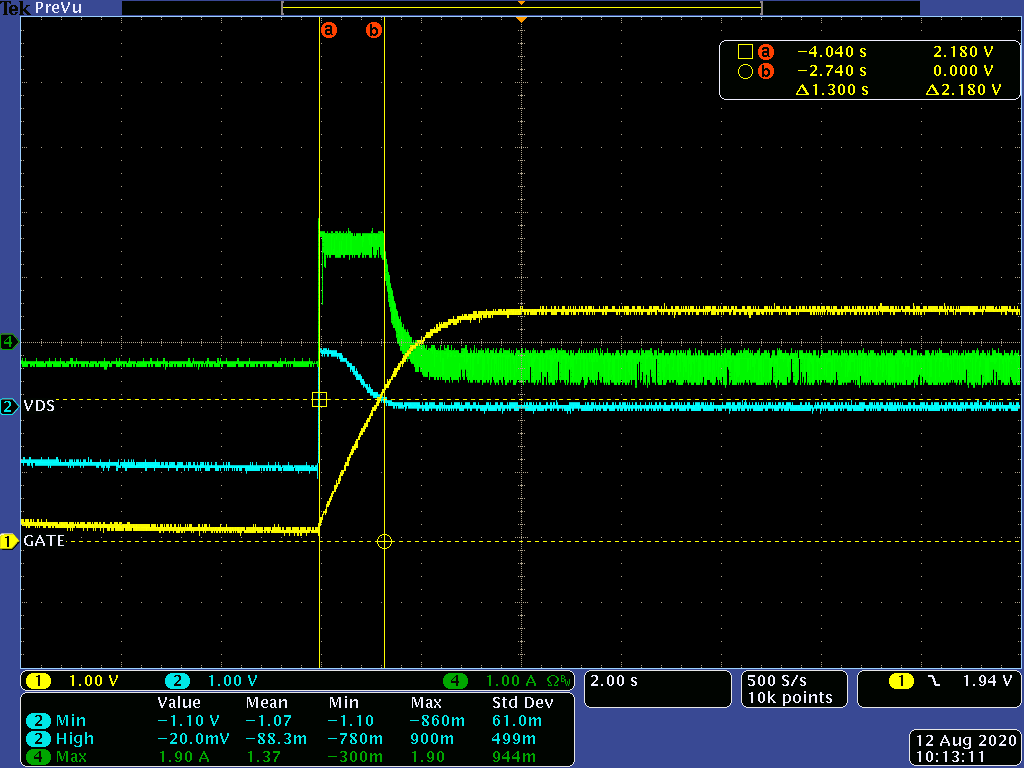Hi Sir,
customer use CSD17308 for super Cap application, there is currently a problem as follow:
1. this is customer the schematic, R3 and C11 is soft start function but because there is already 2A of energy before reach the Vth voltage, will this factor cause the MOS to damage?
if have any suggestion or idea,please kindly let us learn.
please refer the as follow waveform.
Figure 1 (have C11_Cap)
ch1:Gate level
ch2:Vds
ch3:inrush cueernt
Figure 2 . (remove C11 cap)
ch1:Vgate level
ch2:Vds
ch3:inrush current


